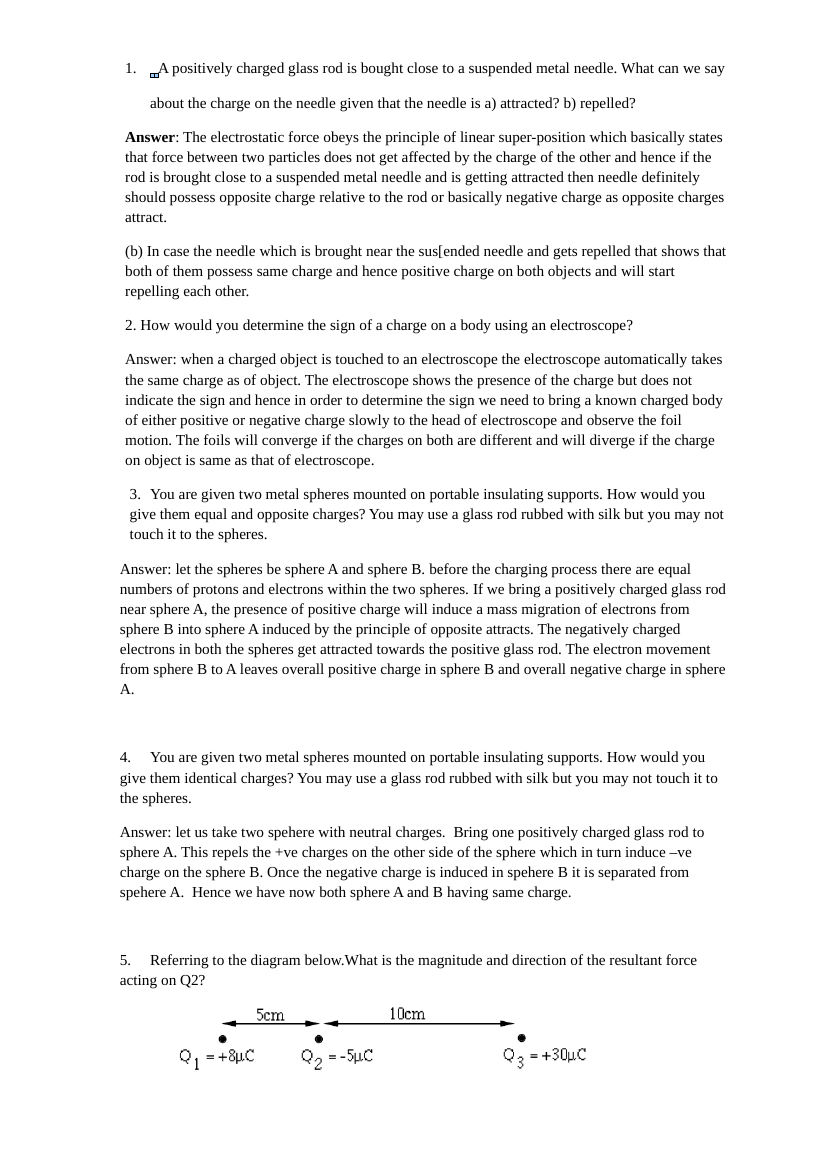electricity
Publié le 22/05/2020

Extrait du document
«
1.
A positively charged glass rod is bought close to a suspended metal needle.
What can we say
about the charge on the needle given that the needle is a) attracted? b) repelled?
Answer : The electrostatic force obeys the principle of linear super-position which basically states
that force between two particles does not get affected by the charge of the other and hence if the
rod is brought close to a suspended metal needle and is getting attracted then needle definitely
should possess opposite charge relative to the rod or basically negative charge as opposite charges
attract.
(b) In case the needle which is brought near the sus[ended needle and gets repelled that shows that
both of them possess same charge and hence positive charge on both objects and will start
repelling each other.
2.
How would you determine the sign of a charge on a body using an electroscope?
Answer: when a charged object is touched to an electroscope the electroscope automatically takes
the same charge as of object.
The electroscope shows the presence of the charge but does not
indicate the sign and hence in order to determine the sign we need to bring a known charged body
of either positive or negative charge slowly to the head of electroscope and observe the foil
motion.
The foils will converge if the charges on both are different and will diverge if the charge
on object is same as that of electroscope.
3.
You are given two metal spheres mounted on portable insulating supports.
How would you
give them equal and opposite charges? You may use a glass rod rubbed with silk but you may not
touch it to the spheres.
Answer: let the spheres be sphere A and sphere B.
before the charging process t here are equal
numbers of protons and electrons within the two spheres.
If we bring a positively charged glass rod
near sphere A, the presence of positive charge will induce a mass migration of electrons from
sphere B into sphere A induced by the principle of opposite attracts.
The negatively charged
electrons in both the spheres get attracted towards the positive glass rod.
The electron movement
from sphere B to A leaves overall positive charge in sphere B and overall negative charge in sphere
A.
4.
You are given two metal spheres mounted on portable insulating supports.
How would you
give them identical charges? You may use a glass rod rubbed with silk but you may not touch it to
the spheres.
Answer: let us take two spehere with neutral charges.
Bring one positively charged glass rod to
sphere A.
This repels the +ve charges on the other side of the sphere which in turn induce –ve
charge on the sphere B.
Once the negative charge is induced in spehere B it is separated from
spehere A.
Hence we have now both sphere A and B having same charge.
5.
Referring to the diagram below.What is the magnitude and direction of the resultant force
acting on Q2?.
»
↓↓↓ APERÇU DU DOCUMENT ↓↓↓


